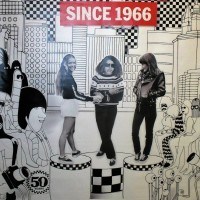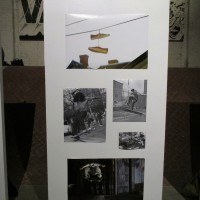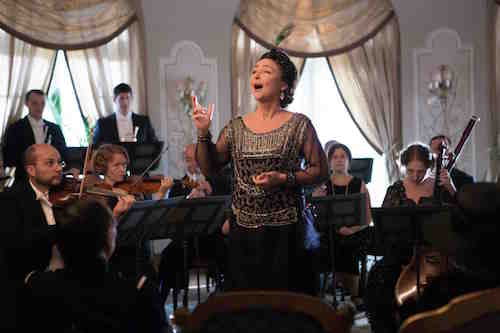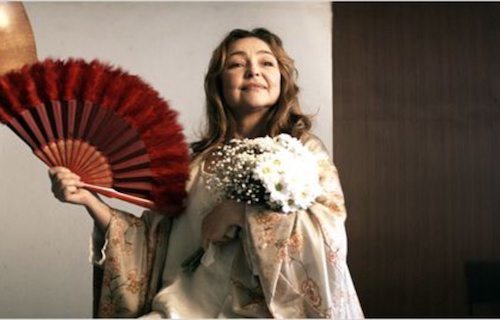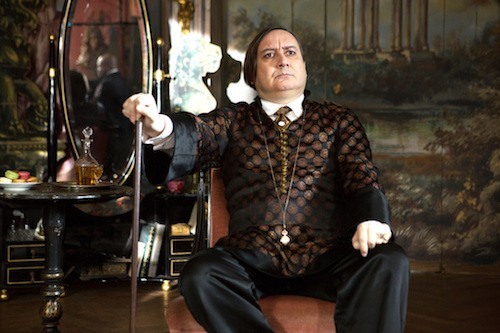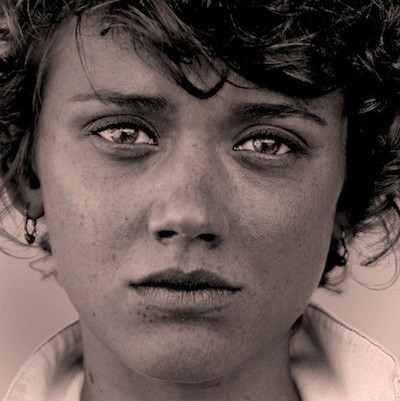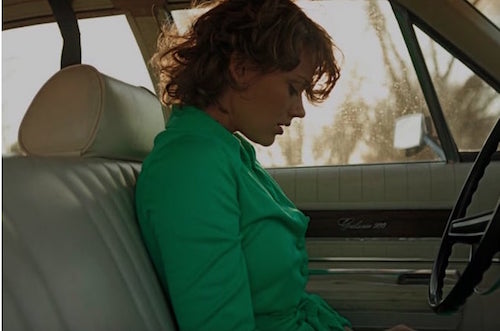- 8 years ago
-
I’ll never forget when Wesley Nessler walking into my 9th grade class at Ft. Lauderdale High wearing checkerboard slip on shoes. I remember thinking to myself, what in the world is this kid wearing? Well, I didn’t hesitate to ask, and quickly found out that these trend setting kicks were Vans. It’s now decades later, and it would be hard to find someone who doesn’t know those shoes and that design, and as I walked through the door at the Vans’ 50th Anniversary celebration Wednesday evening, I was not surprised to find that checkerboard design in full effect.
From the super cool 3D art installations, iconic surf films and classic photography exhibit, it became quite clear that Vans has been a huge influence in American lifestyle, culture, art and sport for a very long time. Furthermore, Vans has become a cultural pillar that stands alone in its broad range of influence. It would only be fitting for the company to tie this historic evening together with diverse music performances that also span across many generations.
The modern day rockers Yeasayer kicked things off with a an impressive set of hits and newer jams, while New York hip hop legend Nas brought the roof down with classics and some newer cuts. The energy level in the room was off the charts at this point as the night was beginning to wind down.
It was great to see so many smiling faces in the huge crowd of both young and older guests. They experienced a special evening that will be remembered for a lifetime. Hat’s off to Vans for all of their great success and their soon to be released campaign, “The Story of Vans.”
Latest News
- 8 years ago
-
2016 is shaping up to be an interesting year for music. Kanye continues to tweet utter nonsense, the new Adele is still climbing the charts, Kendrick Lamar pulled a Beyonce and released a new album out of nowhere. A quarter of the way through and the year is already a mixed bag. Here are some highlights from the past month to ponder as we enter the warm months and festival season.
The Good:
The Foo Fighters, helmed by the nicest-guy-in-rock-and-roll Dave Grohl, are easily one of the best liked bands in the business. From playing surprise shows to playing through bodily injuries, the band wins hearts with pretty much everything they do. Even their foray into television, the HBO documentary series called Sonic Highways that focused on the evolution of American music, was well received and granted a second season. It seemed like the grandeur that is the Foo Fighters would go on everlong. That is until the band’s drummer Taylor Hawkins, during an interview at the Guitar Center Drum-Off, said when asked about the future of the band, “We’re on ihateus right now, we’re on an indefinite ihateus.”
- 8 years ago
-
The eponymous heroine of Xavier Giannoli’s film Marguerite is a tough sell on paper: a wealthy French socialite who fancies herself a great operatic singer, but who is in fact utterly tone-deaf. Yet, as played (with great sensitivity) by Catherine Frot in this French tragicomedy set in the early 1920s, Marguerite Dumont — at least when she’s not singing — is a warm, sympathetic presence with a true appreciation for music. We’re appalled by the sounds that come out of her mouth, but we can’t help but feel for this woman whose vulnerability and unhappiness is palpable.
The character is based on American socialite Florence Foster Jenkins, who has already inspired several plays as well as a forthcoming Hollywood film starring Meryl Streep. Where Jenkins was merely bad, Mme. Dumont is truly awful; her wild screeching performances are some of the most stunning (literally) moments in the film. This could have been fodder for an out-and-out farce, but though Giannoli’s unconventional movie has many humorous moments, it is also dark, poignant, and visually sumptuous.
The film begins with various people arriving at a benefit recital given in Marguerite’s opulent home. There’s young soprano Hazel (Christa Théret), arch young music critic Lucien (Sylvain Dieuaide) and his friend Kyril, an avant-garde artist (Aubrey Fenoy); we’re also introduced to Marguerite’s husband Georges (André Marcon), who pretends that his car broke down so he can avoid the concert. Several opening acts perform before Marguerite herself finally appears to sing the Queen of the Night aria from The Magic Flute, one of opera’s most challenging solos. Her rendition is so terrible we’re as shocked and perplexed as the recital audience: how can Marguerite not hear herself? Afterwards, the crowd — mostly members of a music club bankrolled by Marguerite — applauds enthusiastically, as Lucien and Kyril extol her wildness and abandon. Everyone gives Marguerite encouraging praise, but she herself seems a bit doubtful. Though delusional she’s clearly not arrogant.
Her household is complicit in her fantasy; Marguerite’s solicitous majordomo Madelbos (Denis Mpunga) takes dramatically staged photos of her in various costumes and hides her bad reviews. After reading Lucien’s obliquely positive write-up, Marguerite meets with him and Kyril, who invite her to sing in a public concert. This turns out to be a wildly avant-garde, Dada-ist spectacle during which Marguerite sings “La Marseillaise,” perceived by the audience as highly offensive (though she herself doesn’t understand why). Lucien, who genuinely likes Marguerite, begins to feel guilty about taking advantage of her naiveté.
Meanwhile we see that Georges, who is mortified by his wife’s avocation, is having an affair. The marriage has been failing for some time, though Marguerite is still clearly devoted him and he genuinely tries to protect her. After the “La Marseillaise” debacle, Marguerite is ejected from the music club, whose members have found a replacement patron. Rather than dampening her spirit, the performance has energized Marguerite, who longs to perform again in public. Georges forbids it, and it’s satisfying to see her stand up to him, even as we dread the impending spectacle.
Lucien finds a vocal coach, the flamboyant divo Pazzini (a very amusing Michel Fau) who is bribed into training Marguerite for her concert. (What fun to watch his face upon first hearing the first tortured notes of her audition aria.) Pazzini and his oddball crew set up shop at her house, living off of her largesse. At one point during their intense training sessions, a frustrated Pazzini almost tells her the truth, but he — like many others — just can’t bring himself to go there.
The drama of the buildup to the big concert is matched by the event itself, during which Marguerite performs in a giant pair of wings. Indeed, there is a Black Swan-like sense of doomed fantasy to this scene, which ends abruptly, if not exactly triumphantly.
The film has a few weaknesses: the concert’s aftermath and the ending feel a bit drawn-out and anti-climatic, a subplot involving Hazel and Lucien never quite gels, and the idea that Marguerite’s singing is mainly a bid for attention from her husband seems somewhat simplistic; but the pleasures of Marguerite far outweigh the drawbacks.
Marguerite opens Friday at the Paris Theatre and the Angelika Film Center.
— Marina Zogbi
- 8 years ago
-
Kiev, Ukraine–based knitwear designer Anna Marinenko of Ohhio crafts the most massive and burly 100 percent Merino wool blankets, scarves, and more, that look ridiculously lush and comfortable, available on Etsy.
Photo Credit: Ohhio
And what’s extraordinary about these oversized items is that Marinenko weaves them with her bare hands instead of using knitting needles, thereby creating a warm collection of comfort that features a hefty 3-inch-thick stitch.
 Photo Credit: Ohhio
Photo Credit: OhhioImage of Anna Marinenko with another designer, a photographer, a model, and a stylist
Photo Credit: Ohhio
According to Slate.com, Marinenko also sells colossal and peculiar-looking wooden knitting needles, along with huge spheres of super-thick yarn for consumers who wish “to make the chunky knits themselves.”
However, as Ohhio’s motto goes “we knit emotions,” pointing to the brand’s passion for creating “comfort, beauty and style using simple elements and honest materials.” As stated on their Facebook page, “we believe, Ohhio blankets all designed to please the eye, the hand and the heart,” later adding “all we knit is love.”
A Model wearing chunky knits, holding humongous knitting needles, standing amid oversized balls of yarn
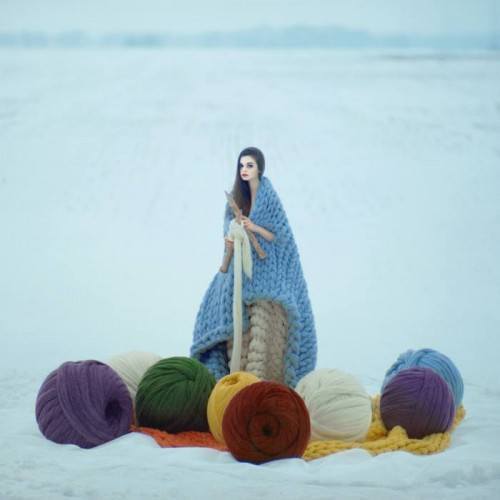 Photo Credit: Ohhio
Photo Credit: OhhioA cozy cat bed
 Photo Credit: Ohhio
Photo Credit: OhhioImage of large knitting needles Ohhio sells
 Photo Credit: Ohhio
Photo Credit: OhhioAnd her decadent designs are attracting high-profile RTW designers like Christian Siriano, who just featured Ohhio knits in his recent New York Fashion Week showcase. “Chunky knits became really popular this year and we’re happy to recognize that we have established this trend,” says Marimemko.
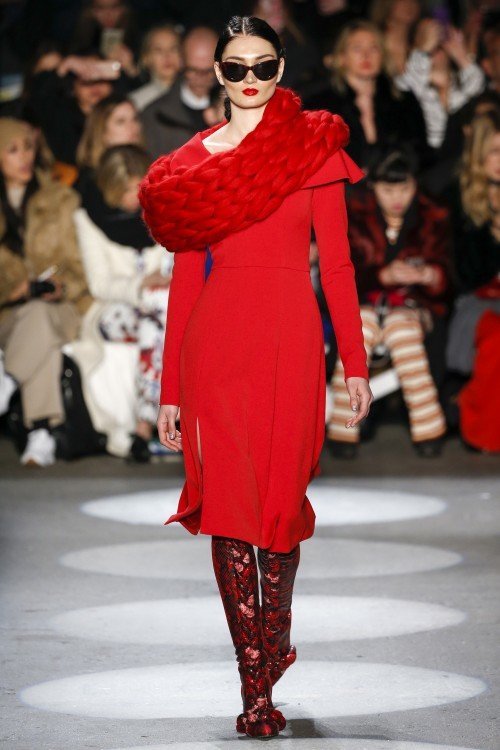 Photo: Aitor Rosas / Indigital.tv
Photo: Aitor Rosas / Indigital.tvAnd don’t worry about packing up these oversized knits after the winter season finally ends — Ohhio knits are lightweight enough to continue using through the summer months. Until then, happy Spring! Stay warm.
- 8 years ago
-
Documentaries have traditionally fallen into two categories: straightforward accounts that tell their story using photo/video/audio snippets plus interviews (think Ken Burns), and those that use re-enactments and other creative devices. Recently, there have been some very innovative examples of the latter category (Kurt Cobain: Montage of Heck, the narrative/doc hybrid A Woman Like Me). Now we have Andrew Shapter’s The Teller and the Truth, a haunting and evocative film about the 1974 disappearance of Francis Wetherbee, a young Texas bank teller whose car was found submerged in a nearby river, but whose body was never found. Though it looks and feels like a real-life chronicle, The Teller and the Truth is something else entirely.
The film starts off like a typical documentary, becomes a sort of true-crime whodunit, and ultimately ends up a highly romantic speculation on what might have happened to the lovely Wetherbee. It’s as intriguing for its unorthodox handling of truth-versus-fantasy as it is for its subject matter.
Apparently Shapter first came upon the long-forgotten story of Wetherbee several years ago when he saw a striking black and white print of a sad-eyed young woman taken by his photographer uncle and mentor. The photo had been shot a week after its subject was briefly taken hostage by a masked bank robber — she was unhurt but reportedly traumatized — and two weeks before she mysteriously disappeared. Shapter, who had previously made the documentaries Before the Music Dies and Happiness Is, became fascinated by Wetherbee’s story and started digging around in her hometown of Smithville, Texas, talking to locals who remembered her and the disappearance.
The film begins in seemingly straightforward documentary style: we see footage of a car being dredged up from a river and hear a radio news report about Wetherbee’s disappearance. There are present-day interviews with and sound bites from various townspeople who recall aspects of the case and Francis’s life; these are presented like clues. Gradually, through accounts from characters including a former boyfriend, an FBI agent, and a local reporter, we learn that Francis was somewhat secretive, that her mother pushed her to marry well, and that she became engaged to the president of the bank in which she worked. She also became friends with a French photographer (presumably Shapter’s uncle), who was more sophisticated than many of the people she knew, and who introduced her to ideas about the outside world.
Reenactments of various vignettes told by these witnesses — not necessarily in chronological order — are presented along with their interviews; interspersed throughout are snippets of evocative, impressionistic footage. Saturated colors, unusual camera angles and dramatic music (courtesy of composer Carl Thiel) all add a dreamy ambiance to the increasingly complex, multi-dimensional story.
The film takes an especially interesting turn after the bank robbery, when its main suspect, a drifter and Vietnam vet, disappears from town. We follow his action-packed trail for a while, then a parallel possible scenario of Francis escaping her stifling, small-town life. Their stories converge, and by this point it’s become hard to tell what’s real, re-enactment or pure fantasy, as reasonable but not-entirely-believable details are revealed.
As the story spirals into a romantic tale that spans several continents, one wants badly to believe that this is what actually occurred; not only does it ultimately provide neat closure to Wetherbee’s sad mystery, but it’s so wondrously optimistic. In a way, The Teller and the Truth is a poignant tribute to a missing person and her loved ones. When we have no idea what actually happened to someone, how wonderful to be given such a hopeful and imaginative explanation.
The Teller and the Truth opens Friday at Cinema Village, Manhattan.
—Marina Zogbi


